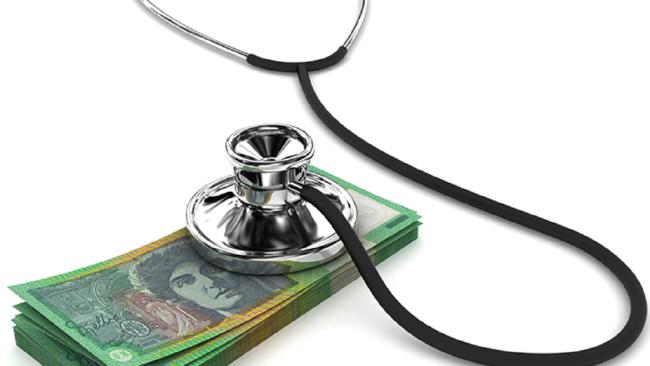
Is the cost of private health insurance really worth it?
AUSTRALIANS are paying excessively more in private health insurance fees than they’re getting back in actual benefits and what’s more, the problem could get worse before it gets any better.
A confidential source from not-for-profit private health insurer HCF told news.com.au that most of the fund’s members on top hospitals cover, which costs $270 per month for a family of four, are 70 per cent in deficit as their fees are significantly greater than the benefits they’ve received.
A 70 per cent deficit means that if $1000 is spent in annual membership fees, only $300 is being paid out in benefits.
When we asked for a breakdown of the average member deficit profiles across policies at some of the country’s leading health insurers, news.com.au came up against brick walls, with NIB Holdings citing “commercial reasons” for not revealing their figures. Yet it is available when a member calls and asks themselves.

The fancy new offices of Medibank Private. Australia’s biggest health insurer booked a 58 per cent jump in profits in the six months to December 31 last year. Not bad.Source:News Corp Australia
Australia wide, the average private health fund member receives $380 in benefits a year, compared to $2324 for the average yearly premium with extras, and $1507 for the average basic cover, according to analysis of 38,000 policies taken in 2015 by consumer advocacy group CHOICE.
Spokesperson for CHOICE, Tom Godfrey blamed “junk policies” which involve basic hospital cover, for causing much of the deficit as well as people taking out policies because they want to avoid paying the Medicare Levy Surcharge.
The surcharge is payable at tax time for those who don’t have private health insurance after income exceeds $90,000 for singles and $180,000 for couples.
Kate Hills chartered accountant at Whitehead Dingley and Betar said the cost benefit of private health at tax time is “debatable” for middle-income earners, who might pay out less in the surcharge levy if they didn’t have private health cover.
For example, a person with a taxable income of $110,000 would pay a $1375 surcharge, which is about $125 less than the average cost of basic private health insurance. That saving goes up to $1000 if you compare it with hospital plus extras cover. This excludes any government rebate for taking out private cover.
HCF chief benefits officer Cindy Shay defended the cost of private health insurance by saying it was “about being covered if you have a health event like needing surgery.”
“If a member does not have to be hospitalised or similar, then they will not make a claim against their policy. This obviously affects the ratio of cost to benefit.”
All of this makes sense. Insurance is there for worst case scenarios. But the difference with health insurance is that in an event of an emergency, every Australian is covered by Medicare. However private patients have more options when it comes to elective surgery, choice of hospital and extras benefits like dental care.

Many would argue that the main reason health insurance is worth it is for dental care, which is not covered by Medicare.Source:Supplied
News of the deficit comes on the heels of an industry wide fee increase of around 5.6 per cent, well above inflation and as the country’s biggest funds Medibank Private and NIB report bumper profit results.
A spokesperson for Medibank Private said that “increasing healthcare costs” were “putting pressure on premiums.”
The question we all have to weigh up is, are the dollars worth it for peace of mind?
Bianca Hartge-Hazelman is the founding editor of online women’s money magazine Financy.com.au.

